Today more than ever there are alternative treatments available for dealing with shoulder pain. Using a TENS unit is a medication- free method of pain management that has shown to be effective. Keep reading to find out how to place the electrode properly.
TENS Pad Placement For Shoulder Pain
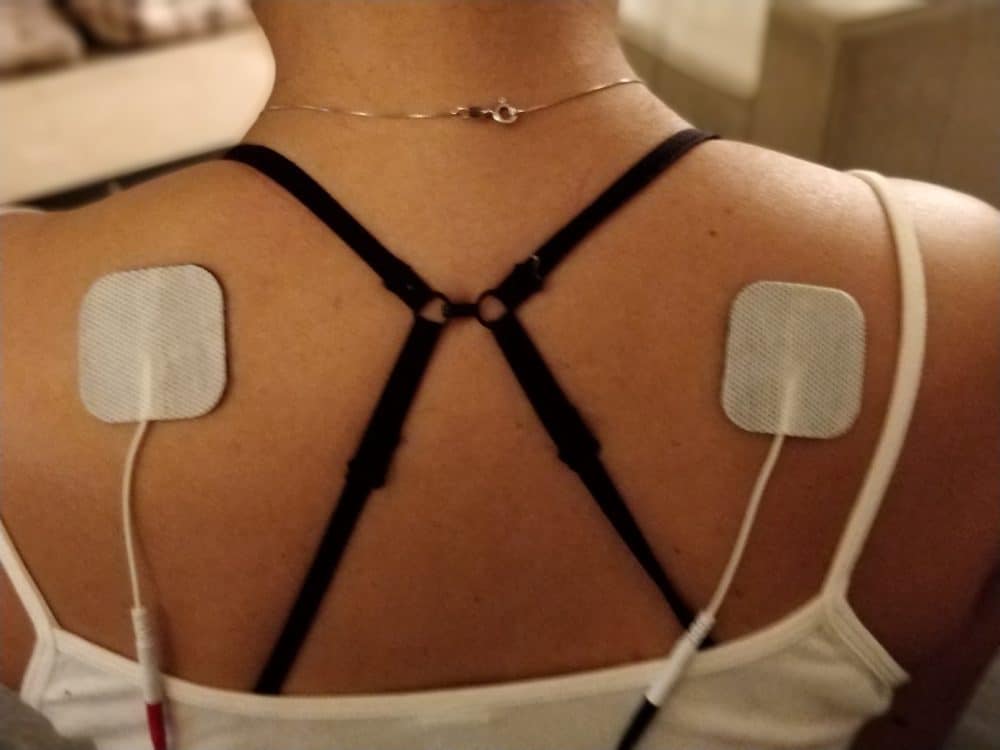
Where to place tens unit pads for shoulder pain? There are a few ways to place a TENS electrode pad on your shoulder. Placement depends on where the pain is occurring. It is recommended to use two pads (one channel) or four pads (two channels) at the same time.
Most TENS machines have at least one channel (2 pads). So for shoulder pain place the pads on the left and right side of your spine in a vertical direction as seen below:
The pads should never touch one another and always be at least 1-2 inches apart. The reason for this is as the distance between the pads increases the effectiveness of the treatment also increase. The goal here is to surround the pain so experiment a bit with the exact placement for the best results.
If the pain happens to extend out further above or below the shoulder area, try using 4 pads.
TENS Unit Placement For Frozen Shoulder
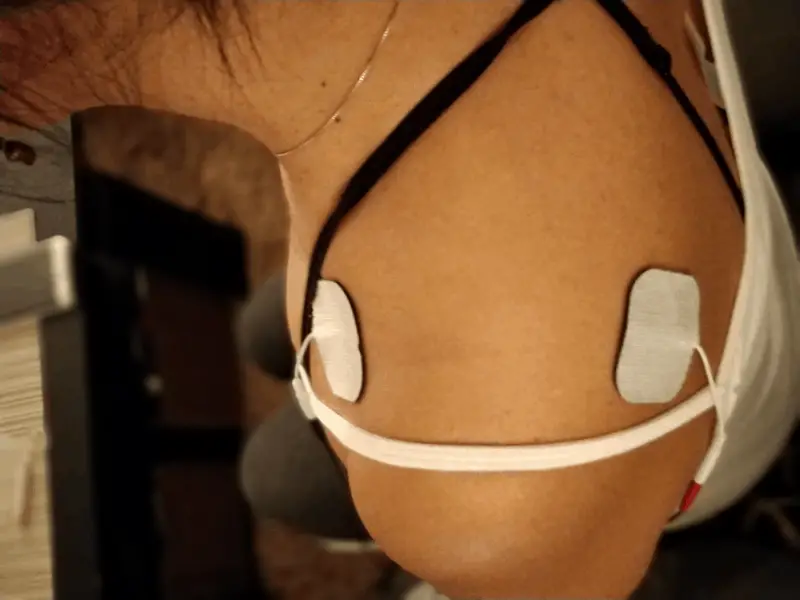
If you suffer from frozen shoulder, a condition where you have a lot of pain, stiffness, and trouble moving your shoulder, here is where you would place the electrode pads:
As you can see one pad is placed on the front of the shoulder while the other one is placed on the back of the shoulder. Placing the pads in this manner will stimulate the entire joint.
Want to learn about TENS setting? Click here
If you are needing a TENS unit or want to upgrade to a newer device check out the iReliev TENS EMS Unit.
This is the exact TENS unit that I use. It is perfect for treating shoulder pain. The iReliev is a great little device and has a lot of going for it.
It is under $80 and has several programs to choose from and is small enough to fit in your pocket.
You do not need to spend hundreds of dollars to get a quality TENS unit and iReliev gives you a ton of value for the price being paid.
Best part is they are based in Dallas, Texas and have phenomenal customer service. Get yours today on the iReliev website by clicking here.
Where can a TENS unit pad be placed safely and effectively?
Check out my resource guide that is all about TENS Placement.
Knee Pain
Neck Pain
Shoulder Pain
Tension Headaches
Golfer’s Elbow
Plantar Fasciitis
Rotator Cuff Pain
Restless Leg Syndrome
Ulnar Nerve Pain
TMJ Pain
and more…..
Instructions on How to Use Your TENS unit
Using a TENS is easy and fairly straight forward. The cool feature of using a TENS is that they are made to be used while walking around. People even work while using a TENS unit. Many are designed with a clip or belt and some are small enough that they can fit in your pocket.
When you are ready to use your TENS unit make sure the device is off before you place the electrode pads on the skin.
When placing the pads make sure that the skin is clean and dry. Do not place on skin that has cuts, rashes or over irritated skin.
When turning the device on it is best to slowly and gradually turn up the intensity level until you feel a tingling or buzzing sensation. After a few minutes the sensation will begin to fade away. When this occurs simply turn up the machine slightly for the remaining time of use.
Just be sure that you do not turn up it up too high as this can result in over stimulation of the area which can sometimes make the pain worse. Also there should be no visible muscle contraction. This is another indicator that the intensity level is set too high.
When using a TENS aim for about 30-45 minutes of treatment. You can use it for up to 12 hours but keep in mind that many TENS units have a limited battery life so you may need to charge (lithium battery) it or have spare batteries for extended use.
So when you have finished using the machine remove the pads slowly and carefully from the skin. You can wash the skin with just soap and water. If you notice any redness or irritation of the skin just use the machine in a different area.
Side Effects From TENS Therapy
The vast majority of people that use a TENS do not experience any side effects. However, it is possible for a small number of users to have an allergic skin reaction to the electrode pads. (Under 3% of users). In order to address this issue many companies that produce TENS units now provide latex-free electrode pads.
Some other possible side effects could include:
• Soreness from overusing the TENS unit
• Soreness associated with having the TENS intensity level set way too high
• Muscle twitching and discomfort from setting the intensity level too high
For most people TENS therapy is a safe treatment that has no side effects when used correctly. When you compare it to medications for pain, TENS has virtually no side effects.
Keep in mind that over use of a TENS unitcan make the area of skin sore and setting the level too high can lead to muscle twitching that can be uncomfortable. Just use as directed and you should not encounter any issues.
Can you overuse a TENS unit? Click here learn more.
Precautions to Take When Using a TENS Unit
• Do not put the electrode pads on skin that is damaged, broken or irritated
• Never place the electrode pads on the front or side of the neck
• Never place close to your eyes
• Never use close to your mouth

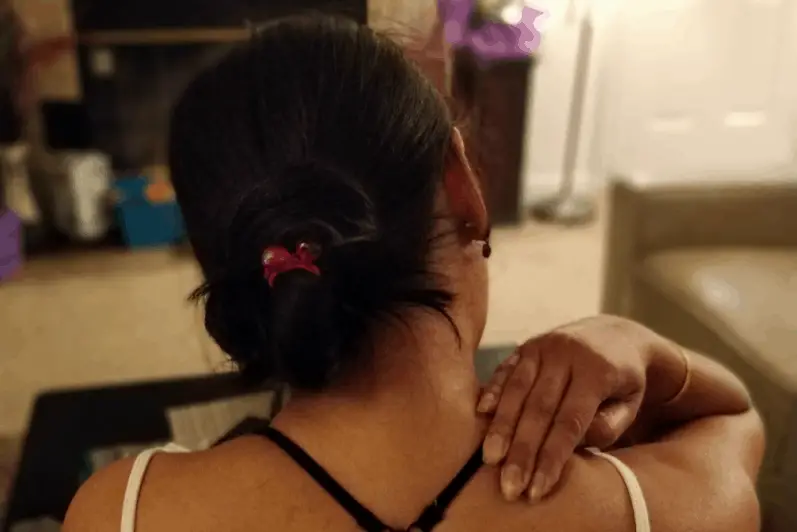
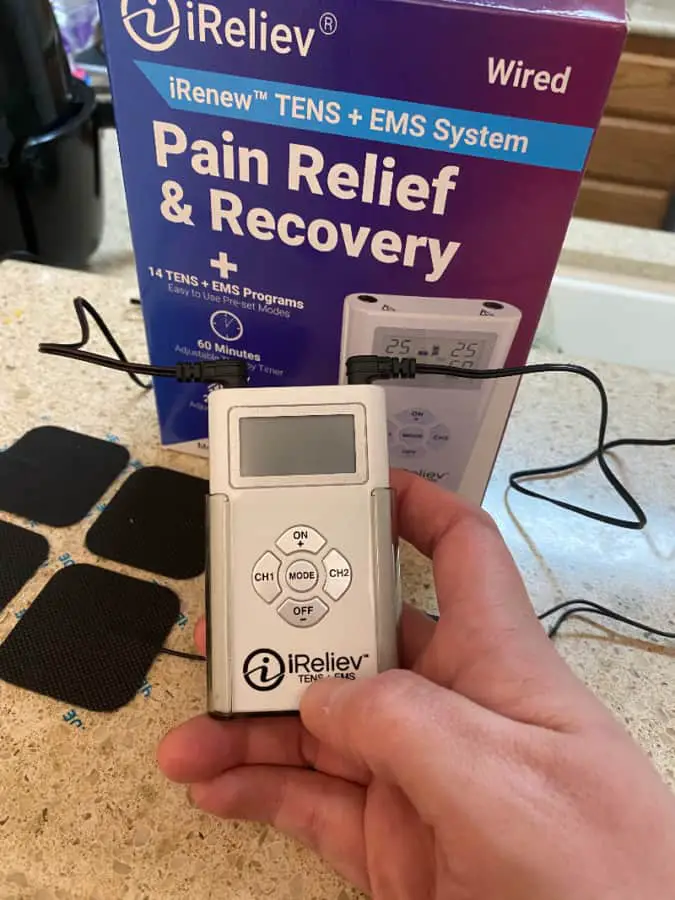
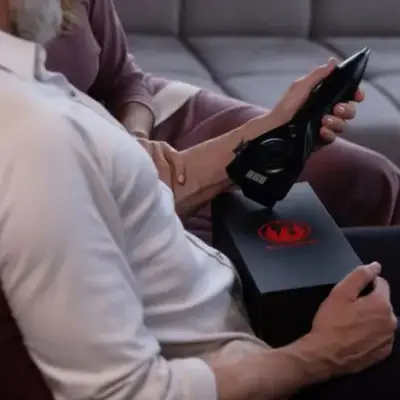

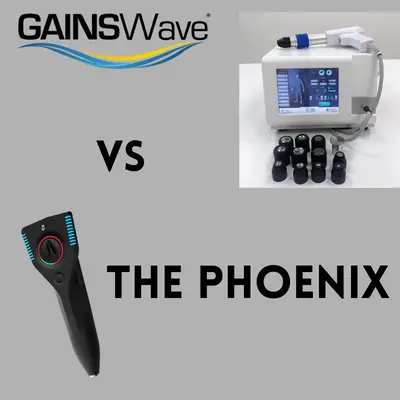
Leave a Reply
You must be logged in to post a comment.